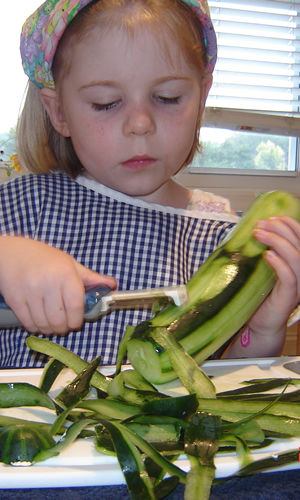Montessori Español has a wide variety of materials that are organized into different areas; each promoting physical, cognitive and social development. The materials are presented to the child according to their capacity and ability. The child learns to work properly and to select the materials they want to work with, fully understanding their responsibility to start and finish their chosen materials. In accordance with the Montessori Method, materials are first presented by the teacher to the child so they can have a full understanding of them. The child then works without the adults’ presence. The materials have a "control error” in which the child can help themselves if they have any questions, to successfully finish their material smoothly.
Montessori language materials are an excellent tool for teaching a second language. Through our experience in teaching a second language, we have agreed in not limiting ourselves to only using the basic materials available to us through the Montessori curriculum. Therefore, we have expanded our materials to help our students succeed when learning a second language. The immersion program requires us to invent and create new materials and to find new strategies to adequate immerse our children in our program.
Math is logic, sequence, order, and the extrapolation of truth. It can therefore be said that children have an inborn attraction for math. Their minds are full of energy that propels them to absorb, manipulate, classify, order, sequence, abstract, and repeat. These tendencies also help the child in fully developing their Spanish-language skills.
Sensory materials, in addition to being very attractive to children, are materials that possess the quality to isolate a concept. Some materials are designed to show the difference between: thick -thin, large - small, cold - hot, long – short etc. Children can learn these concepts by using all of their senses. When children have acquired a variety of vocabulary through sensorial materials, they take their new-learned knowledge to other contexts all while acquiring their new language skills.
For example: Learning the concept of big and little with the presentation of the "pink tower”, they will use what they learned with another similar context.
"Mi casa es grande y mi papá es grande y mi bebé pequeño”
"My house is big, my dad is big and my baby is small.”
Practical life gives the children the skills necessary to develop as an independent entity with activities such as caring for the environment and the people, food preparation, exercises of grace and courtesy. This allows the child to develop independence, order, coordination and concentration skills that will be necessary to start learning a second language since they will need to focus and concentrate on what others say when the teachers and classmates are communicating in the Spanish language. The grace and courtesy exercises allow us to develop an extensive list of phrases that will help the child to survive any frustration that they might feel when they are new to our immersion program. These phrases are practiced on a daily basis as a routine for the child to become familiar with different words and phrases so they can start to include them in their vocabulary. Slowly but surely, the children will naturally start to say small phrases in Spanish that will allow them to express their wishes and needs.
